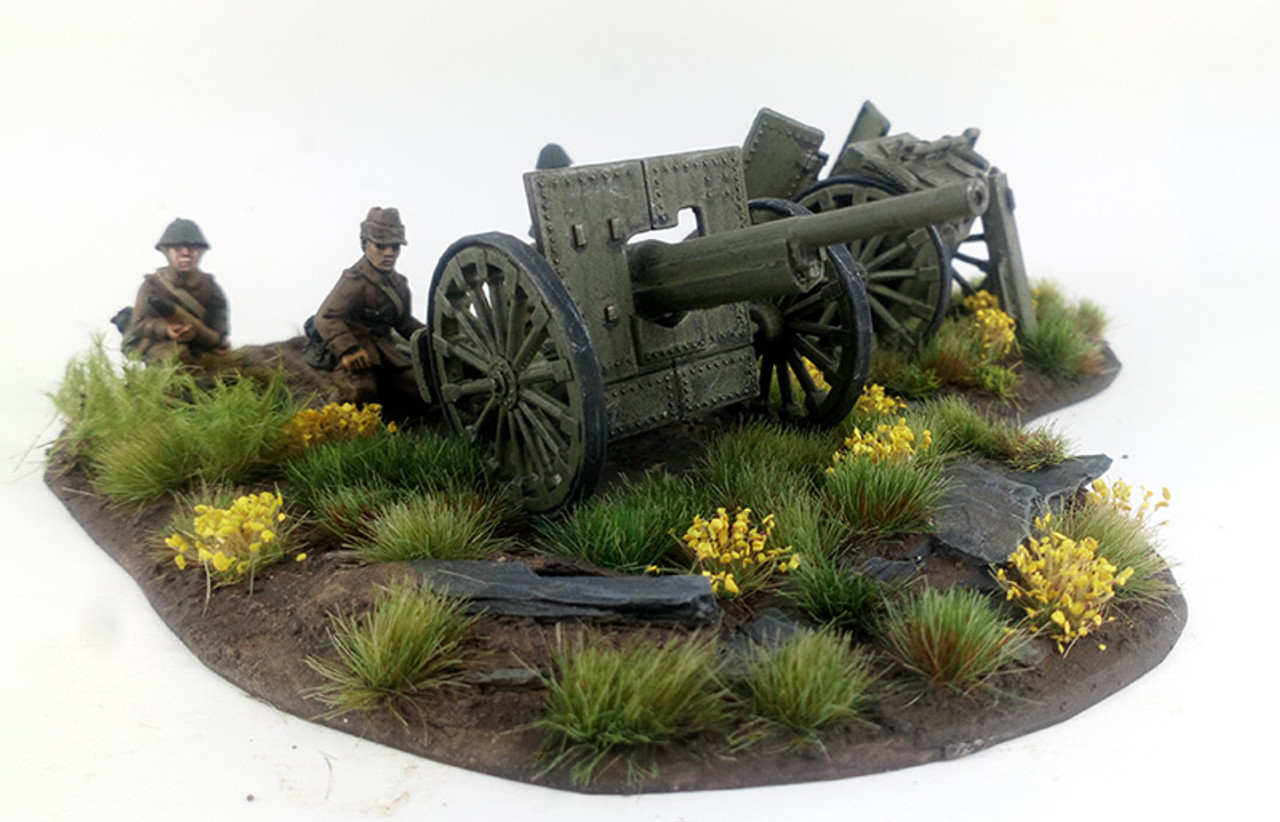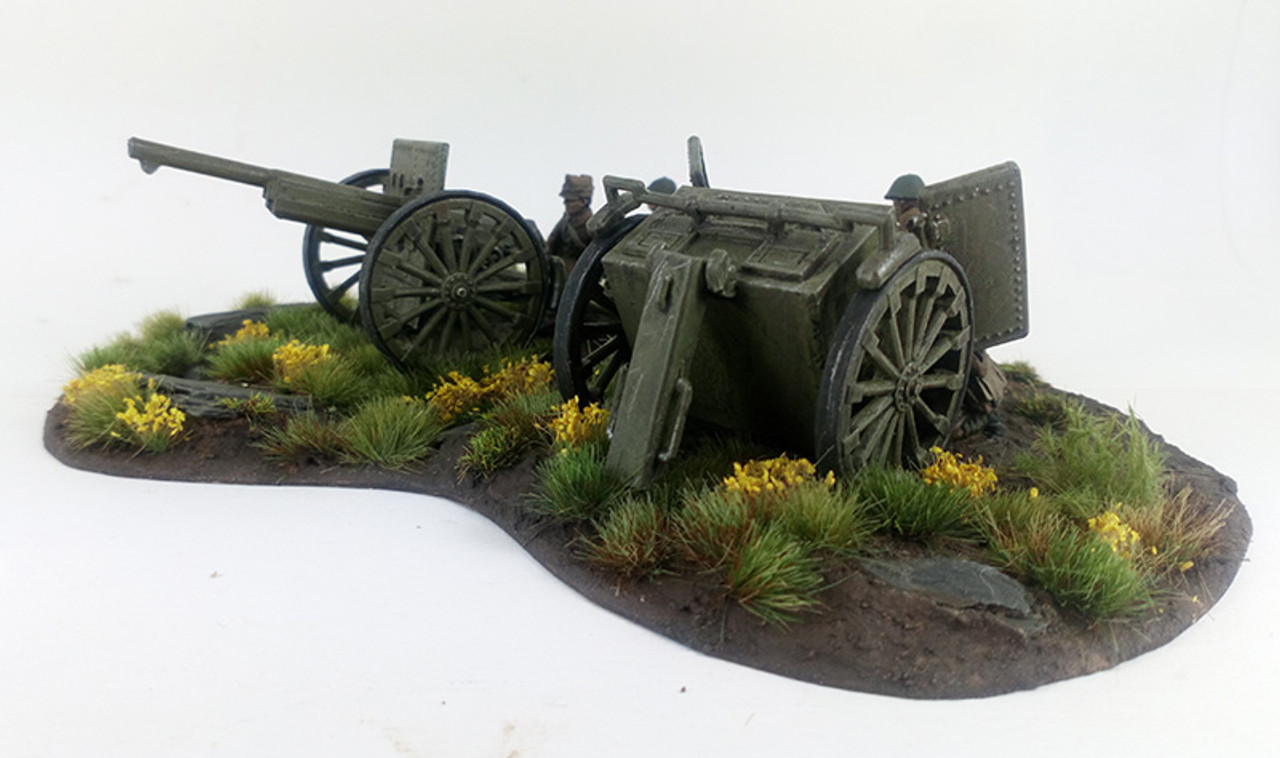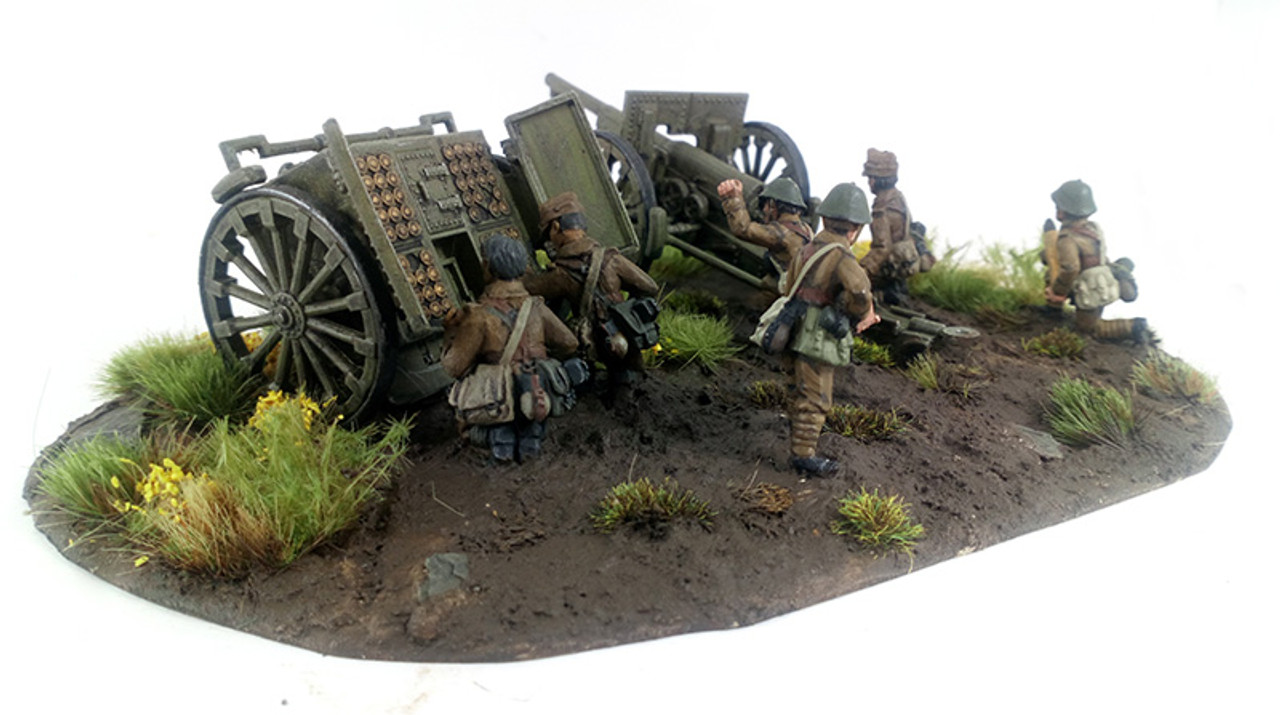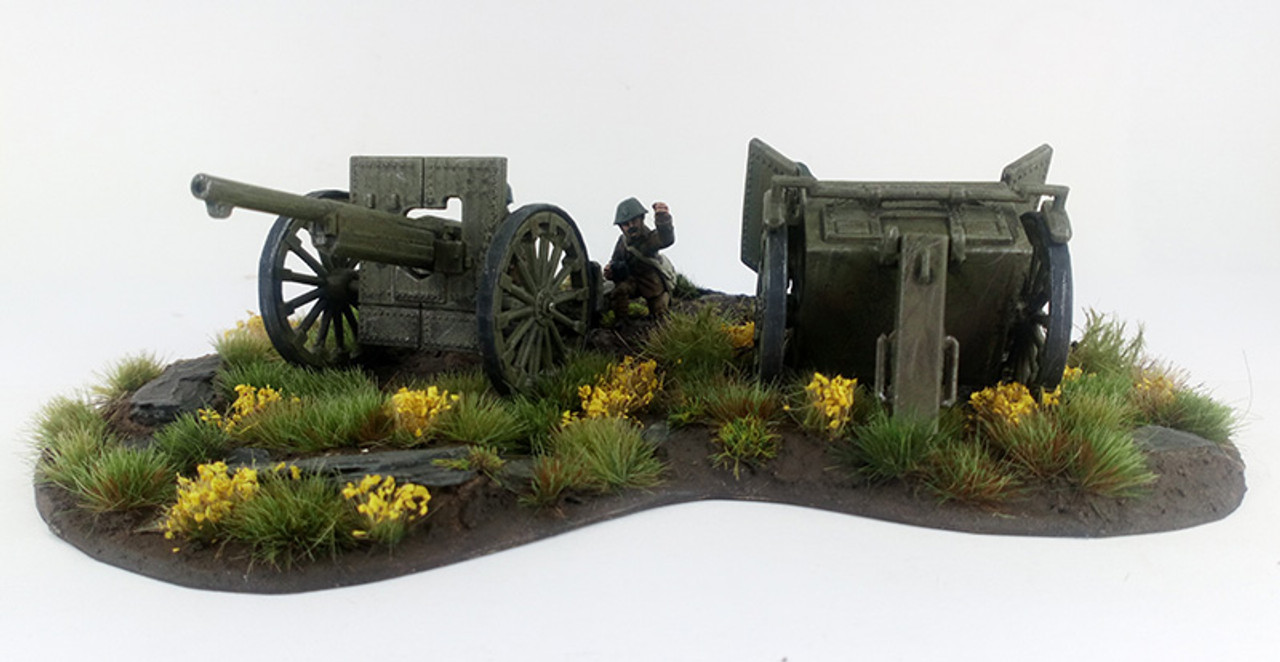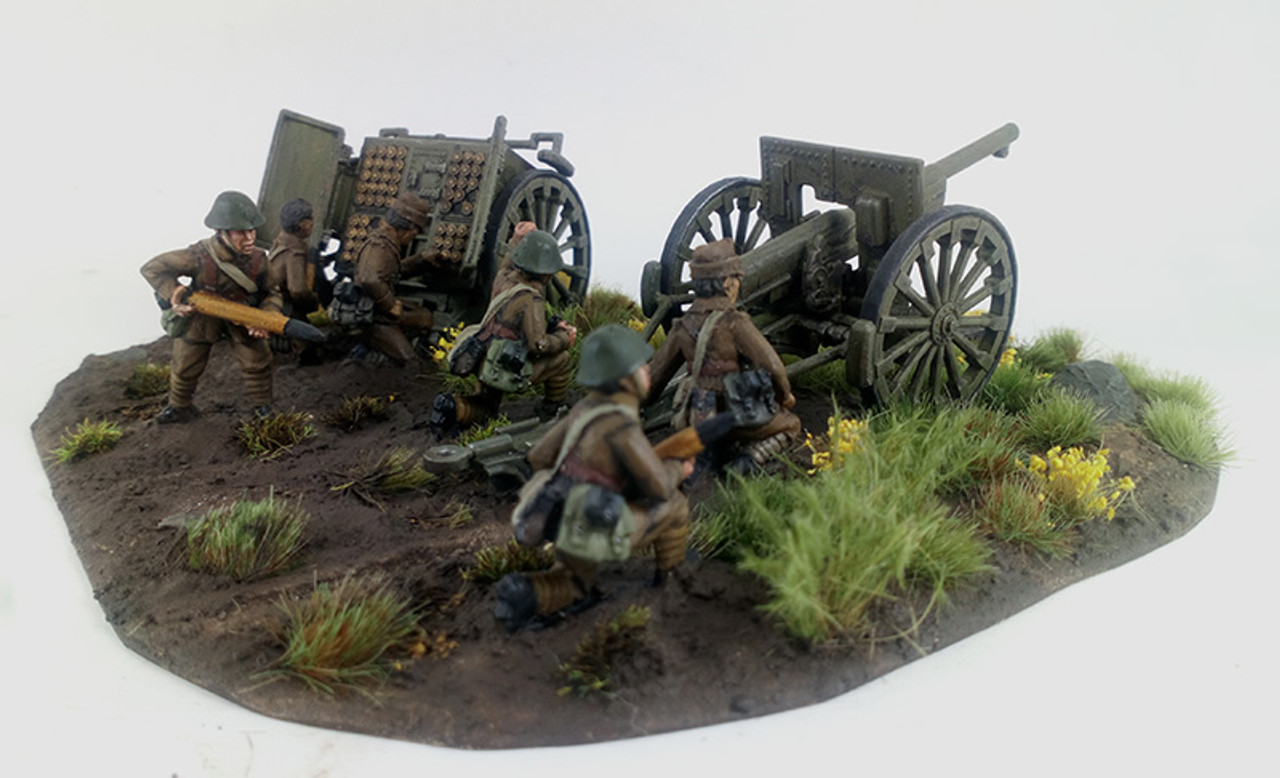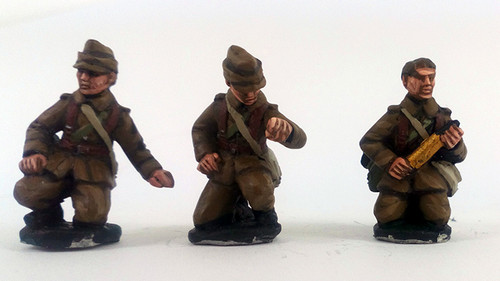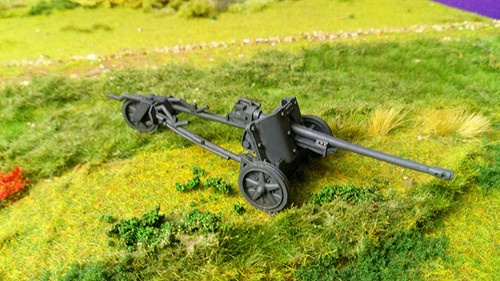Product Description
The French 75 mm field gun was a quick-firing field artillery piece adopted in March 1898. Its official French designation was: Matériel de 75mm Mle 1897. It was commonly known as the French 75, simply the 75 and Soixante-Quinze (French for "seventy-five"). The French 75 was designed as an anti-personnel weapon system for delivering large volumes of time-fused shrapnel shells on enemy troops advancing in the open. After 1915 and the onset of trench warfare, other types of battlefield missions demanding impact-detonated high-explosive shells prevailed. By 1918 the 75s became the main agents of delivery for toxic gas shells. The 75s also became widely used as truck mounted anti-aircraft artillery. They were also the main armament of the Saint-Chamond tank in 1918. Romania had a considerable number of World War I guns of 75 mm and 76.2 mm. Some models were modernized at Resita works in 1935 including French md. 1897. The upgrade was made with removable barrels. Several types of guns of close caliber were barreled to use the best ammunition available for 75 m m caliber which was explosive projectile model 1917 "Schneider". The new barrel was made of steel alloy with chrome and nickel with excellent mechanical resistance to pressure which allowed, after modifying the firing brake, the recovery arch and the sighting devices an increase of the range from 8.5 km to 11.2 km and a rate of fire of 20 rounds/minute. During World War 2 these guns also used Costinescu 75 mm anti-tank rounds. These upgraded field guns were used in all infantry divisions in World War II.

